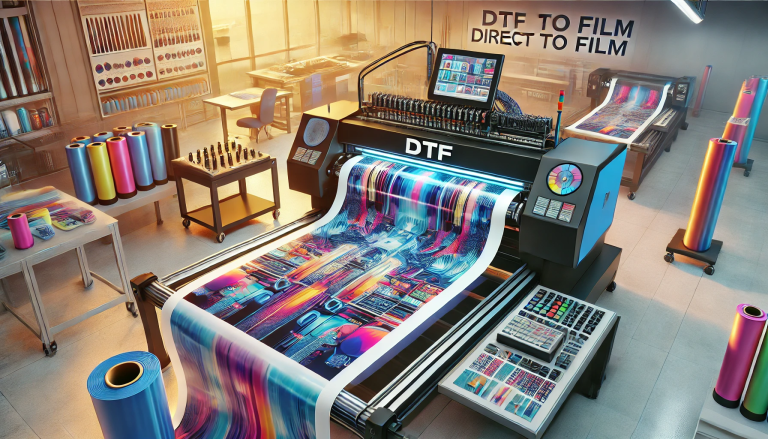“Comparing UV DTF and DTG Printing: Which is Best for Your Needs?” -MAXDTF- UV Magic Film Factory, UV DTF Transfer AB Film Supplier, Made in China
In the world of digital printing, technologies are constantly evolving, and two of the newer players in the game are UV DTF (Ultra Violet Direct to Film) and DTG (Direct to Garment) printing. Both methods offer unique advantages, and understanding the differences between them can help you determine which is best for your particular needs. In this article, we’ll explore these two printing techniques, comparing and contrasting them, so you can make an informed decision for your next project.
An Introduction to UV DTF Printing
UV DTF, or Ultra Violet Direct to Film, is a recent innovation in the world of digital printing. This technique involves printing the design onto a special film using UV-curable inks, which are then transferred to the final substrate – be it fabric, wood, metal, or glass – via a heat press.
UV DTF offers several advantages. The UV-curable inks used in this process allow for the printing of vivid, high-resolution images that are both water and scratch-resistant. Furthermore, since the inks cure instantly under UV light, there’s no need to wait for the ink to dry.
One of the key benefits of UV DTF printing is its versatility. It can be used on a broad range of substrates, including those with uneven surfaces or complex shapes, expanding the range of products that can be customized.
Delving into DTG Printing
DTG, or Direct to Garment, is another popular digital printing method. As the name implies, it involves printing directly onto a garment using special water-based inks. These inks permeate the fabric, creating a strong bond that results in a highly durable print.
DTG is prized for its ability to produce highly detailed, full-color prints, much like a high-resolution printer. It’s particularly well-suited for complex designs, intricate patterns, or images with numerous color changes. However, DTG printing is generally used on cotton or cotton blend fabrics, limiting its versatility compared to UV DTF printing.
UV DTF vs. DTG: The Comparison
When comparing UV DTF and DTG, the best choice largely depends on your specific needs and the materials you’re working with.
In terms of versatility, UV DTF has the upper hand. Its ability to print on a wide array of substrates, including those that are uneven or rigid, gives it a distinct advantage. On the other hand, if your primary substrate is cotton or cotton blend fabric, DTG could be a more effective choice.
Quality-wise, both methods offer excellent, high-resolution prints. However, the color vibrancy and durability of UV DTF prints tend to surpass those of DTG due to the UV-curable inks.
In terms of speed, UV DTF has a slight advantage as there’s no drying time required. With DTG, there’s often a need for pre-treatment and curing time, which can increase production time.
Conclusion
Whether you choose UV DTF or DTG printing, both methods offer unique advantages that can be leveraged based on the specifics of your project. UV DTF’s flexibility and robustness make it a versatile choice for a wide range of materials, while DTG’s intricate detail handling and soft feel on fabric make it an excellent choice for apparel. By understanding your requirements and the strengths of each method, you can select the printing technology that is best suited to your needs.



